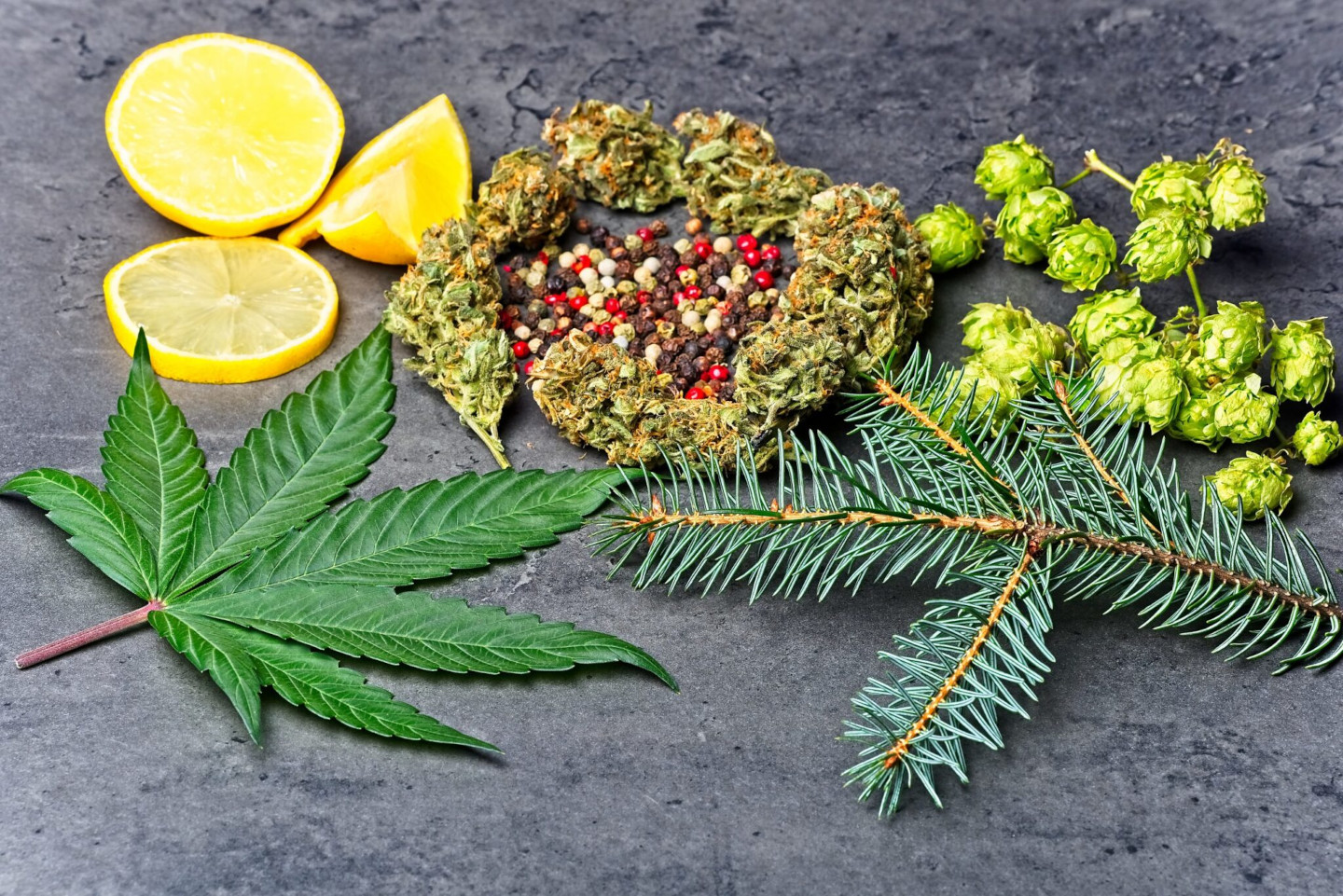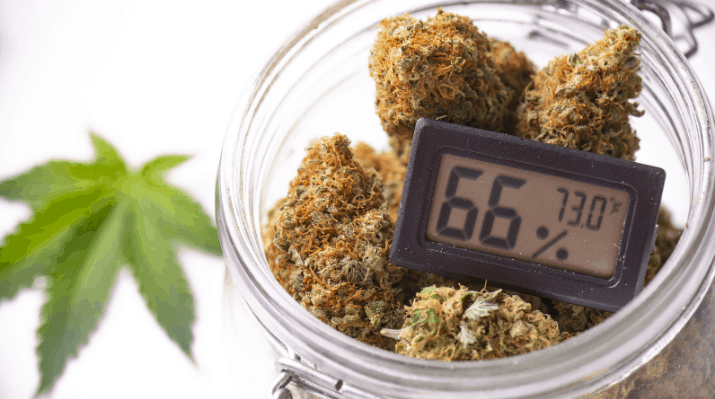There are several ways to maximize terpene production in cannabis plants:
Provide the plants with the right growing conditions: terpenes are produced in the trichomes of the plant, so providing the proper environment will promote trichome growth.
What are Terpenes?
Terpenes are a class of organic compounds that are found in many plants, including cannabis. They are responsible for the distinct aromas and flavors of different cannabis strains. They are found in the trichomes of the plant, which are small, hair-like structures that cover the leaves, buds, and flowers of the plant.
Terpenes have a variety of potential therapeutic benefits and are known to interact with the body’s endocannabinoid system, which is involved in regulating various physiological processes such as appetite, pain, mood, and sleep. They can also interact with other neurotransmitters and receptors in the brain, which can affect things like anxiety, depression, and even psychosis.
Some of the most common terpenes found in cannabis include myrcene, limonene, pinene, linalool, and caryophyllene. Each of these terpenes has its own unique aroma and potential therapeutic effects. For example, myrcene is known for its sedative effects, limonene for its mood-lifting properties, and pinene for its anti-inflammatory and bronchodilator effects.
It’s important to note that cannabis is a complex plant and the effects of terpenes are not fully understood yet and more research is needed to fully understand the potential benefits and interactions of terpenes with other compounds present in cannabis.
Nutrients to maximize terpene production:
Nutrients play an important role in terpene production in cannabis plants. The plants need specific macro and micronutrients to produce terpenes, so it’s important to use a nutrient solution that is formulated for cannabis cultivation.
Cannabis plants require a balance of essential nutrients such as nitrogen, phosphorus, and potassium (NPK) to grow and produce terpenes. Nitrogen is important for vegetative growth and helps to promote healthy leaf development. Phosphorus is important for root growth and flowering, while potassium helps to regulate water balance and increases the plant’s resistance to stress.
In addition to NPK, cannabis plants also require other essential micronutrients such as calcium, magnesium, sulfur, and iron. These micronutrients are necessary for the plant to produce terpenes, and deficiencies in these micronutrients can lead to reduced terpene production.
It’s also important to note that over-fertilizing cannabis plants can also be detrimental to terpene production. High levels of nutrients can lead to the production of excess sugars in the plant which can inhibit terpene production.
In summary, providing cannabis plants with the right balance of essential macro and micronutrients is important for promoting healthy trichome growth and increasing terpene production. It’s important to use a nutrient solution that is formulated for cannabis cultivation and to monitor nutrient levels to ensure that plants are not over-fertilized.
Control the light to maximize terpene production:
The light intensity can affect terpene production in cannabis plants. The light cycle is an important factor in cannabis cultivation, and the intensity and duration of light can affect the plant’s growth and development, including terpene production.
During the vegetative stage of growth, cannabis plants need a lot of light to promote healthy leaf development and growth. High light intensity during this stage can lead to the production of more chlorophyll, which can in turn increase the production of terpenes.
During the flowering stage, the plants need a reduction in the light intensity and duration, this will signal the plants to start producing more terpenes, as well as the other compounds needed for the plant to produce buds. This is why it’s important to control the light cycle to ensure that the plants are in the flowering stage for the maximum amount of time, to maximize terpene production.
It’s also worth noting that high light intensity can also lead to stress on the plant and cause it to produce fewer terpenes. Therefore, it’s important to provide the right light intensity and duration for the stage of growth to promote healthy growth and maximize terpene production.
It’s also important to mention that light quality, specifically the spectrum of light, can also affect terpene production. For example, the blue light spectrum is known to promote vegetative growth and terpene production, while the red light spectrum is known to promote flowering and cannabinoid production.
In summary, light intensity and duration play an important role in terpene production in cannabis plants. The right light intensity and duration during the vegetative and flowering stages can promote healthy growth and increase terpene production. Additionally, light quality and spectrum also play a role in terpene production, and different spectrums can promote different stages of growth and chemical production.
Strain Selection to maximize terpene production:
Genetics plays a significant role in terpene production in cannabis plants. Different cannabis strains have unique genetic makeup and produce different levels of terpenes. Some strains are known for producing high levels of certain terpenes, while others may produce less. For example, the strain “Lemon Haze” is known for its high levels of limonene, which gives it its distinct lemon aroma, while the strain “Death Bubba” is known for its high levels of myrcene, which gives it its earthy, musky aroma.
The specific genes that are responsible for terpene production are not fully understood yet, but it is known that terpene biosynthesis is a complex process that is influenced by various factors, including genetics, environmental conditions, and the plant’s overall health.
When breeding cannabis plants, breeders select strains that have desirable traits such as high terpene production, high yield, and resistance to pests and diseases. By selectively breeding plants with these traits, breeders can create new strains that are specifically designed to produce high levels of terpenes.
It’s also worth mentioning that, the genetics of the plant is not only important for terpene production but also for the overall quality, yield, and resistance of the plant. Therefore, when selecting a strain to grow, it’s important to consider the terpene profile, but also the other characteristics that are important to you.
In summary, genetics play a significant role in terpene production in cannabis plants. Different strains have unique genetic makeup and produce different levels of terpenes. By selectively breeding plants with desirable traits, breeders can create new strains that are specifically designed to produce high levels of terpenes.
.
Proper drying and curing and terpene preservation
Terpenes are very sensitive to heat, light, and oxygen, therefore proper drying and curing process are necessary to preserve the terpene profile of the plant.
Curing is the process of drying and aging cannabis flowers after they have been harvested. It is an important step in the cultivation process as it can affect the overall quality and taste of the final product. Curing can also affect the terpene profile of cannabis.
During the curing process, the moisture content of the buds is gradually reduced, which can cause the terpenes to become more concentrated and stable. This can result in a more potent aroma and flavor. Additionally, as the buds dry and cure, the enzymes in the plant are able to break down certain compounds, which can lead to the formation of new terpenes and a more complex aroma.
Curing also helps to preserve the terpenes. terpenes are very sensitive to heat, light, and oxygen, and if not handled properly during the drying and curing process, the terpenes can degrade and be lost. The proper curing process includes low temperature, low humidity, and a dark environment. This helps to preserve the terpenes and ensure that they are present in the final product.
It’s worth noting that, curing cannabis can take several weeks and it’s important to monitor the moisture content of the buds throughout the process to ensure that they are drying at the right rate. Over-drying or under-drying the buds can affect the terpene profile and overall quality of the final product.
In summary, the curing process can help to concentrate, stabilize and preserve the terpenes in cannabis, leading to a more potent aroma and flavor, and a more complex terpene profile.
Does Growing In Soil Increase Terpene Production?
Growing cannabis in soil can potentially increase terpene production, but it depends on the quality of the soil and the growing conditions provided. Soil that is rich in organic matter, and provides the necessary macro and micronutrients for cannabis growth, can promote healthy trichome growth and increase terpene production. Additionally, soil-grown cannabis plants may have improved access to beneficial microorganisms which can aid in plant growth, including terpene production. However, it’s important to note that other factors such as genetics, light, temperature, humidity, and pest control also play a role in terpene production.
It’s also worth mentioning that many growers use hydroponics or other soilless growing methods to cultivate cannabis, and these can also promote trichome growth and terpene production if the right conditions are provided.




